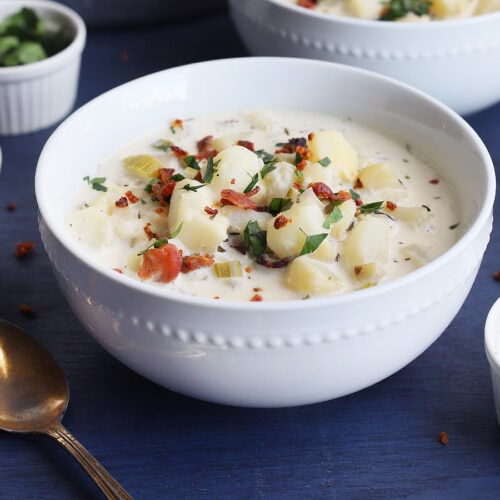Oyster Stew
Oyster stew, laced with heavy cream, herbs and briny bivalves, is a delicious Christmas Eve tradition served in the Southern United States. But don’t reserve this just for the holidays. It’s delicious any day of the year!
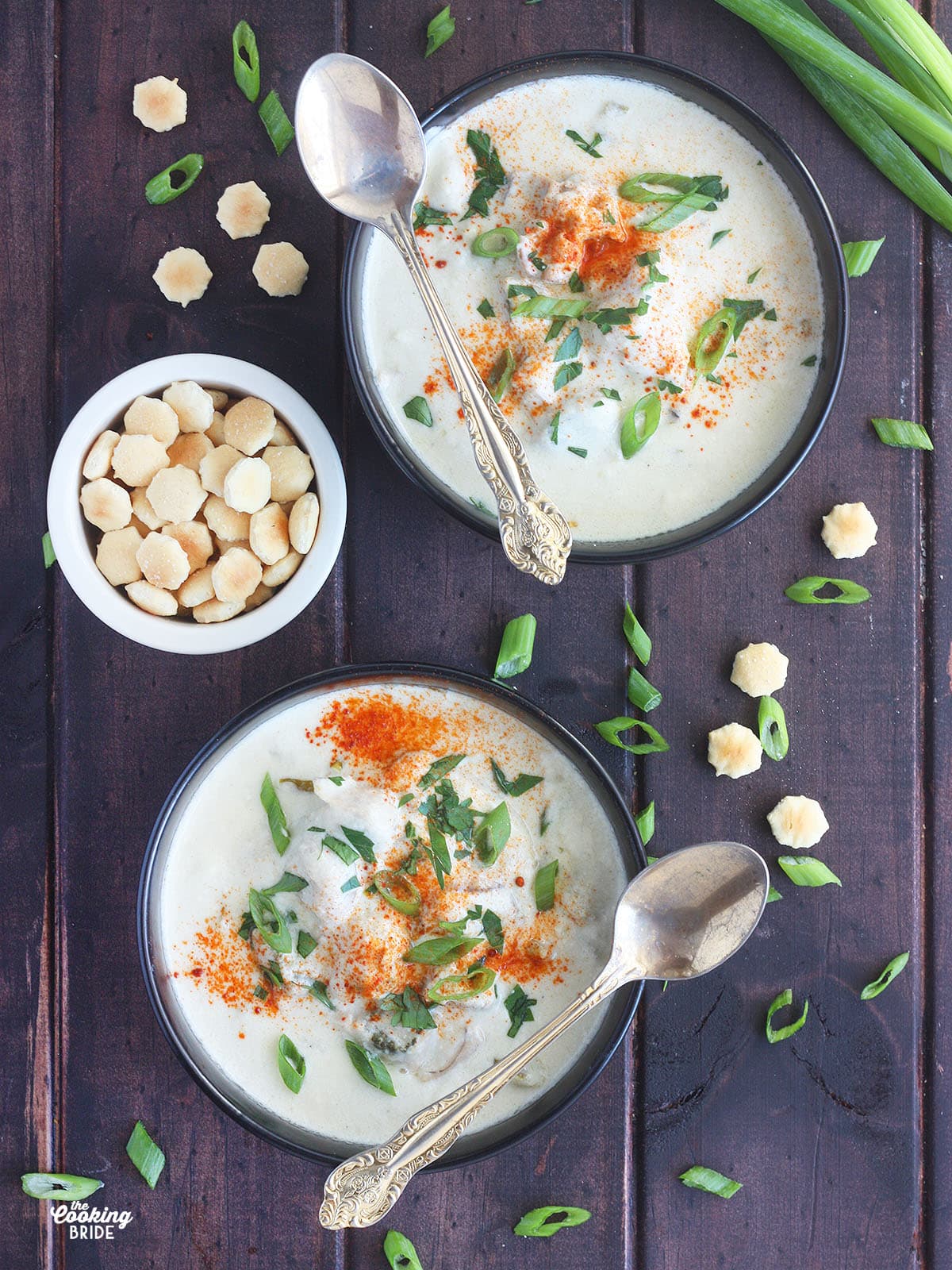
Gulf oysters have long been a mainstay food staple among folks who live along the coastal regions of Louisiana, Mississippi and Alabama. Visit any one of these areas and you’ll likely find oysters prepared in dozens of different ways – raw oysters on the half shell, chargrilled oysters, buttery oysters Rockefeller.
However, creamy oyster stew, laced with heavy cream and loaded with briny bivalves, has been a Christmas Eve tradition since the 1800’s. The flavor is similar to a New England Clam chowder, but with a spicy dash of cayenne pepper reminiscent of Cajun and Creole cooking.
Looking for more tasty oyster recipes? You will love fried oyster po’ boys, oyster dressing, scalloped oysters, and oven baked oysters.
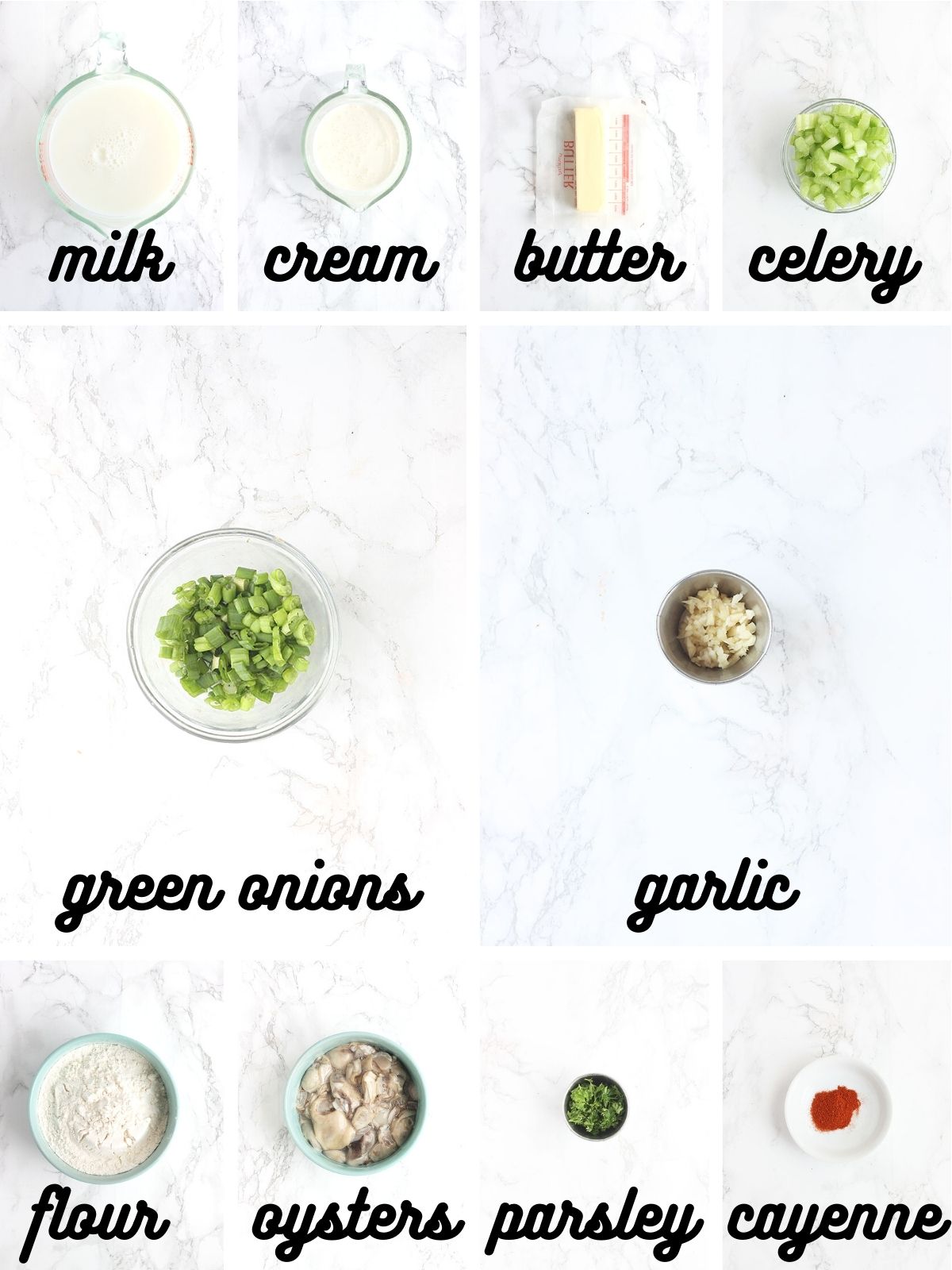
How Did Oyster Stew Become a Christmas Eve Tradition?
I couldn’t write a post about Christmas Eve oyster stew without first doing a little research on why it’s traditionally served during the holidays. Oysters were first introduced to French settlers by Native Americans in the 1700’s, who in turn brought them to the markets in New Orleans. Louisiana use to be one of the largest producers of oysters in the United States, before enduring catastrophic setbacks such as Hurricane Katrina and the BP Oil Spill.
While oysters were in high demand, modern refrigeration did not yet exist. You’ve heard the saying, “Only eat oysters in months that end in ‘r?’” Cooler temperatures in December meant oysters could be transported with less risk of spoilage. Therefore, fresh oysters began showing up in markets and became associated with the holidays.
Once final reason, Louisiana and the Gulf coast have a high concentration of Catholics. Religious practices prohibit Catholics from eating meat on the eve of a major religious holiday. However, fish and seafood are acceptable (you’ve heard of “Fish Fridays?”). Thus, the tradition of oyster stew on Christmas Eve was born.
Purchasing Oysters
Since I live so close to the Gulf Coast, I can easily find fresh shucked oysters in the seafood department of my favorite grocery store. I wait and purchase my oysters no more than 24 hours ahead of time. Remember, this is raw seafood and it can spoil quickly.
Fresh oysters will be plump and glossy and smell briny, like the sea. The liquid they are stored in should be clear. If you notice a strange color of foul smell, don’t use them. If fresh oysters aren’t readily available where you live, feel free to used canned oysters instead.
Before you get started, you may want to look over your oysters and see if there are any that need to be cut into smaller pieces. My oysters were BIG FELLAS. I ended up quartering most of them. Be sure to keep all the liquid they are store in. We will be adding that to our stew later.
How to Make Oyster Stew
Start by heating four cups of whole milk and two cups of heavy cream in a medium saucepan over medium low heat. You want to heat the milk low and slow and not let it come to a boil. Boiling can cause the milk solids to separate, also known as curdling.
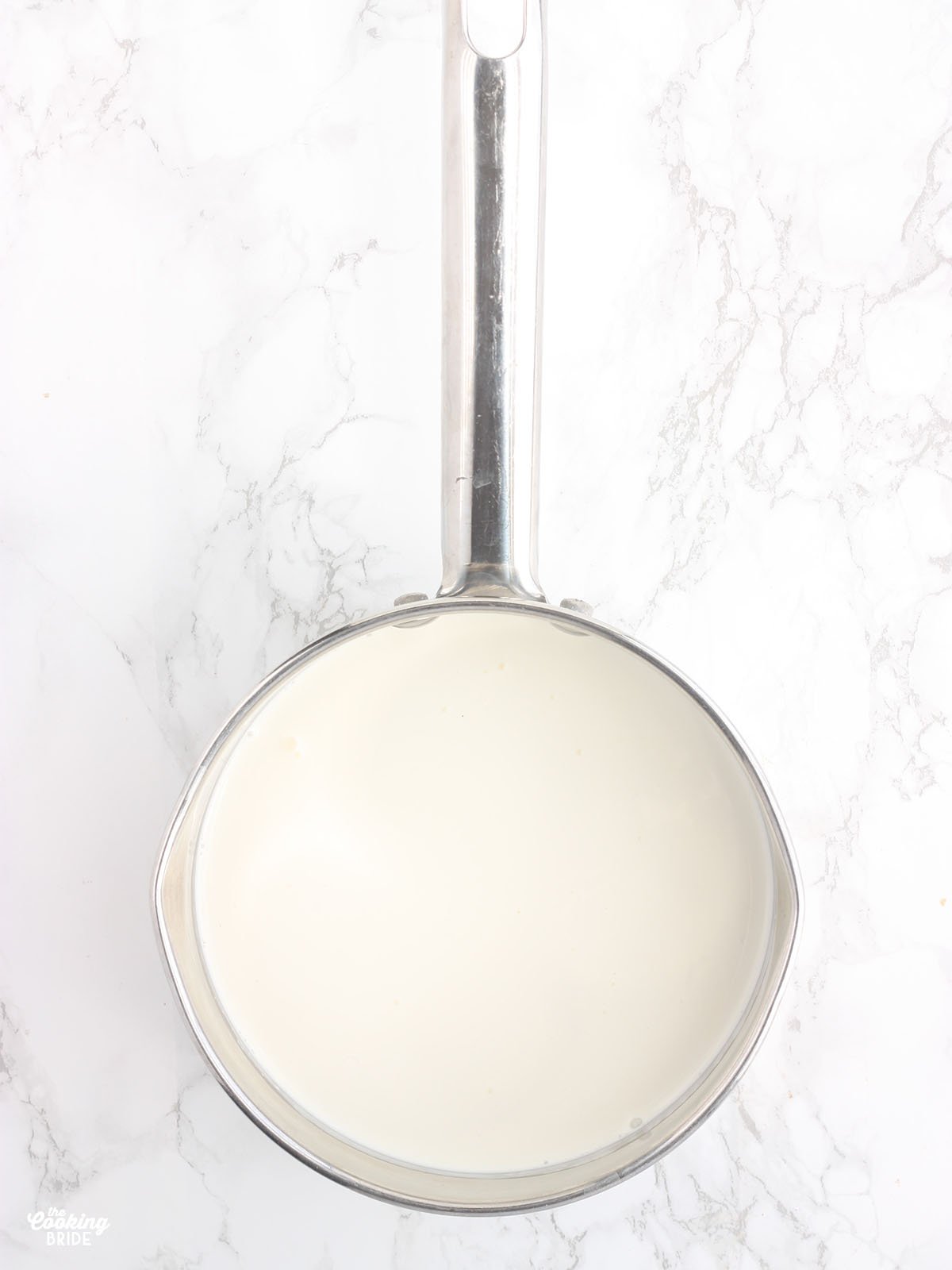
While the milk is heating, melt one cup (two sticks) of unsalted butter in a large stockpot over medium heat. Once the butter is melted, add one cup of chopped celery and sauté for five minutes. Next, add one cup of green onions. Sauté this for two minutes. If the green onions start to brown, reduce the heat to medium low. Finally, add two tablespoons of minced garlic and sauté for 30 seconds.
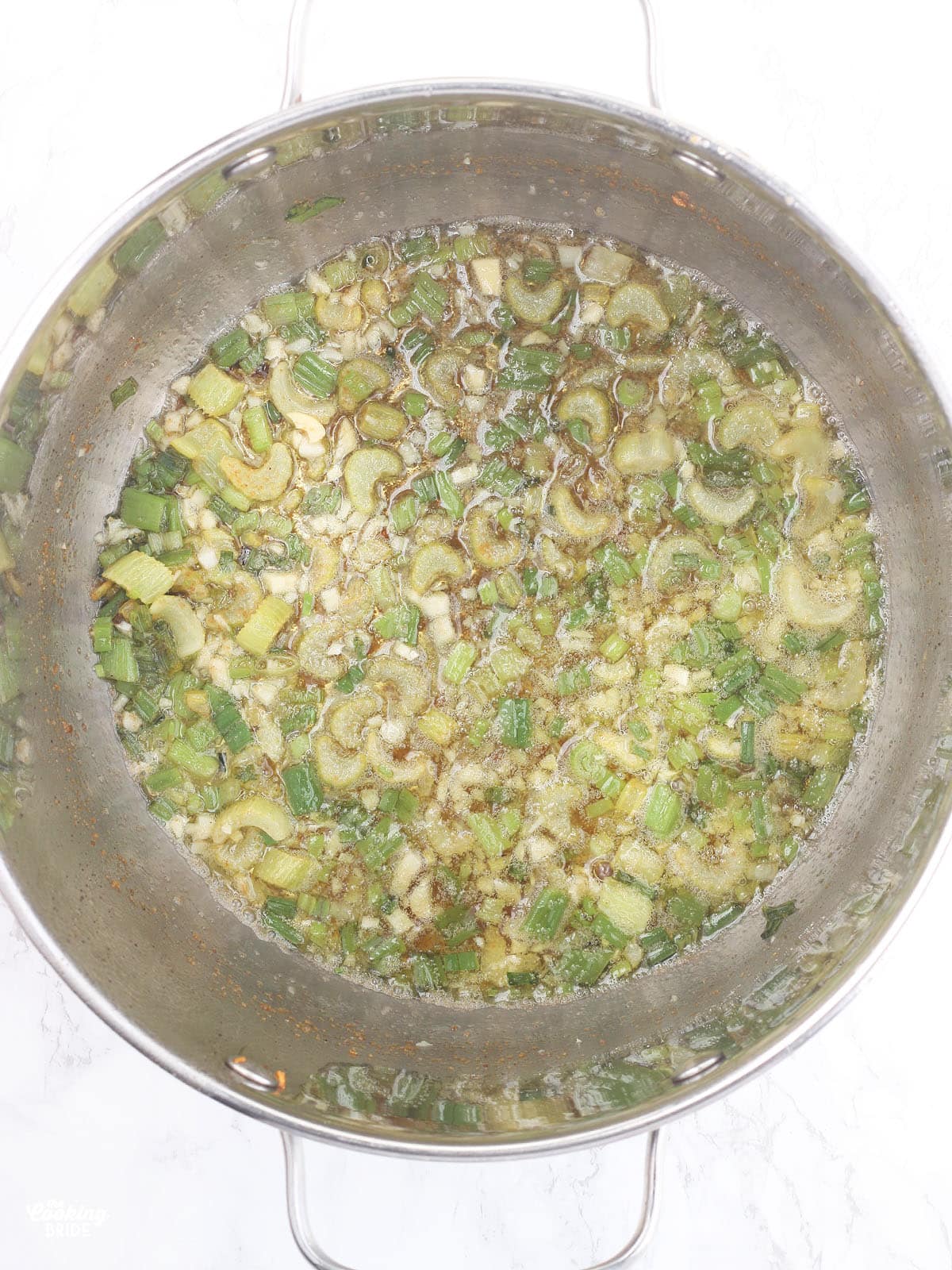
Gradually whisk in four tablespoons of all-purpose flour. Cook the flour for 2-3 minutes, stirring constantly, to remove the raw flour taste. Add the warmed milk and cream in a slow stream, stirring constantly to prevent lumps from forming. Bring the soup to a simmer over medium heat, then reduce the heat to medium-low and continue to simmer for 10 minutes. Make sure to stir the stew frequently to prevent the liquid at the bottom from burning the bottom of the pot.
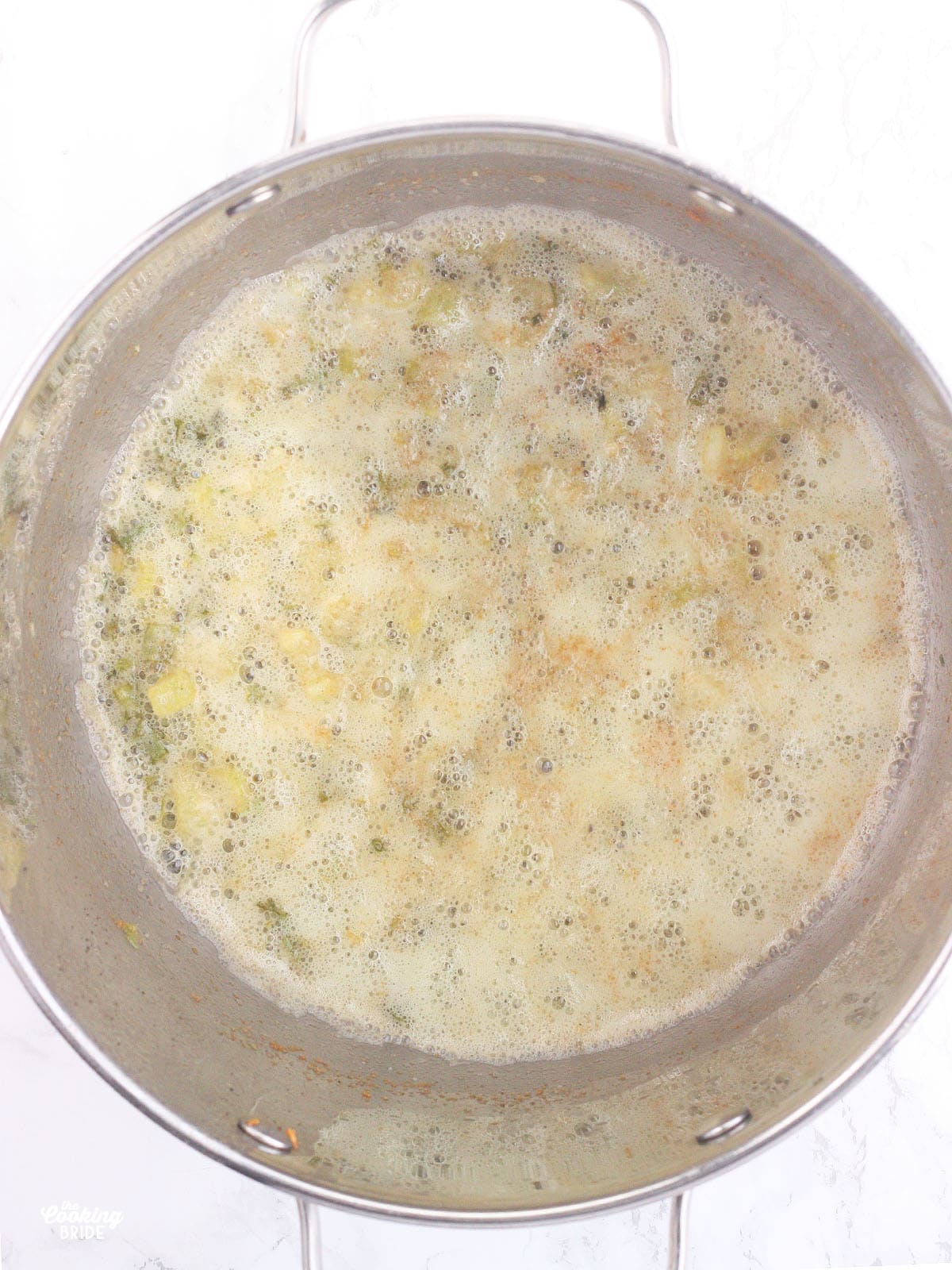
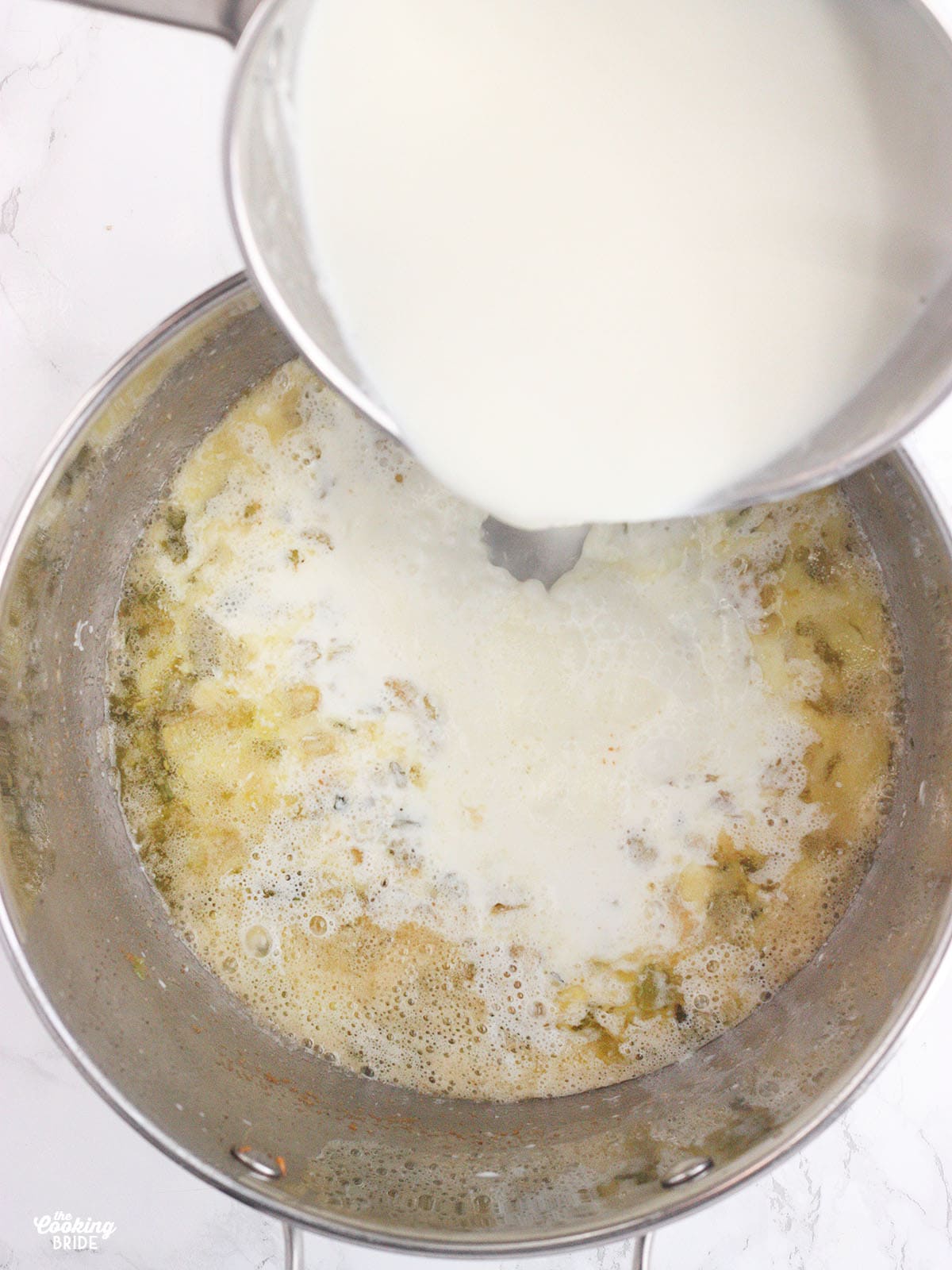
Finally, add the oysters along with their juice. Bring the soup back to a simmer over medium heat, then once again, reduce the heat to medium-low and cook for an additional 10 minutes until the oysters are cooked through. They will look opaque, feel firm and the edges will start to curl when they are cooked.
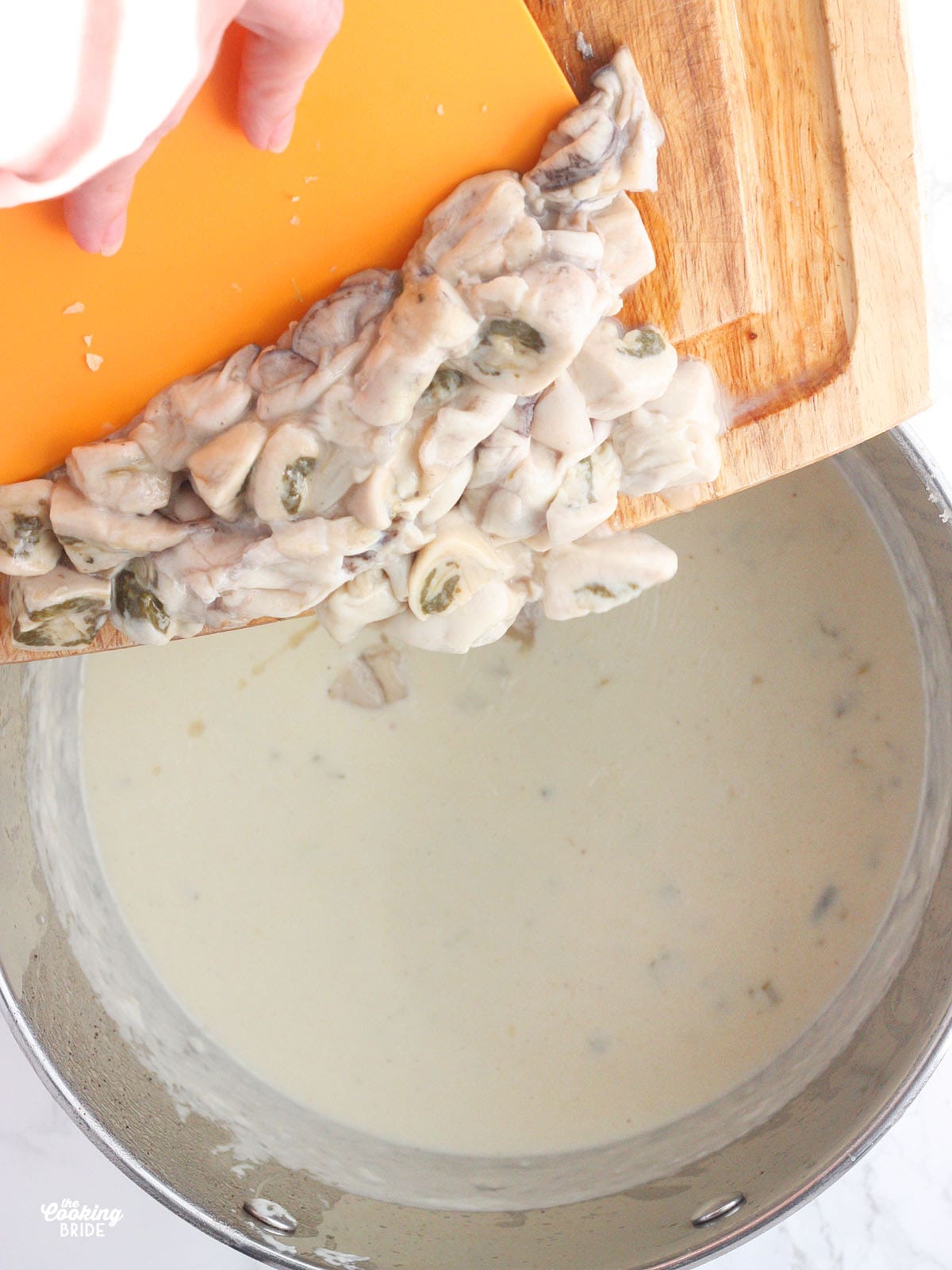
Remove the stew from the heat. Season with salt and pepper to your preference. Ladle the stew into individual bowls and garnish with minced parsley, green onions and a sprinkle of cayenne pepper if desired.
Is oyster stew safe to eat if you’re pregnant?
While eating raw oysters is an absolute no-no while pregnant, cooked oysters are considered safe. However, it’s always a good idea to check with your doctor first.
How to Store Leftover Oyster Stew
Leftover oyster stew should be refrigerated within two hours. Transfer it to an airtight container with a lid and be sure to consume it within 3-4 days. I have had great success reheating this stew. Just heat it slowly over low heat on the stove. Don’t allow it to come to a boil or the milk will curdle and the texture of the oysters will become tough and chewy.
Unfortunately, oyster stew does not freeze well. The cream will separate once thawed and the texture becomes runny and watery.
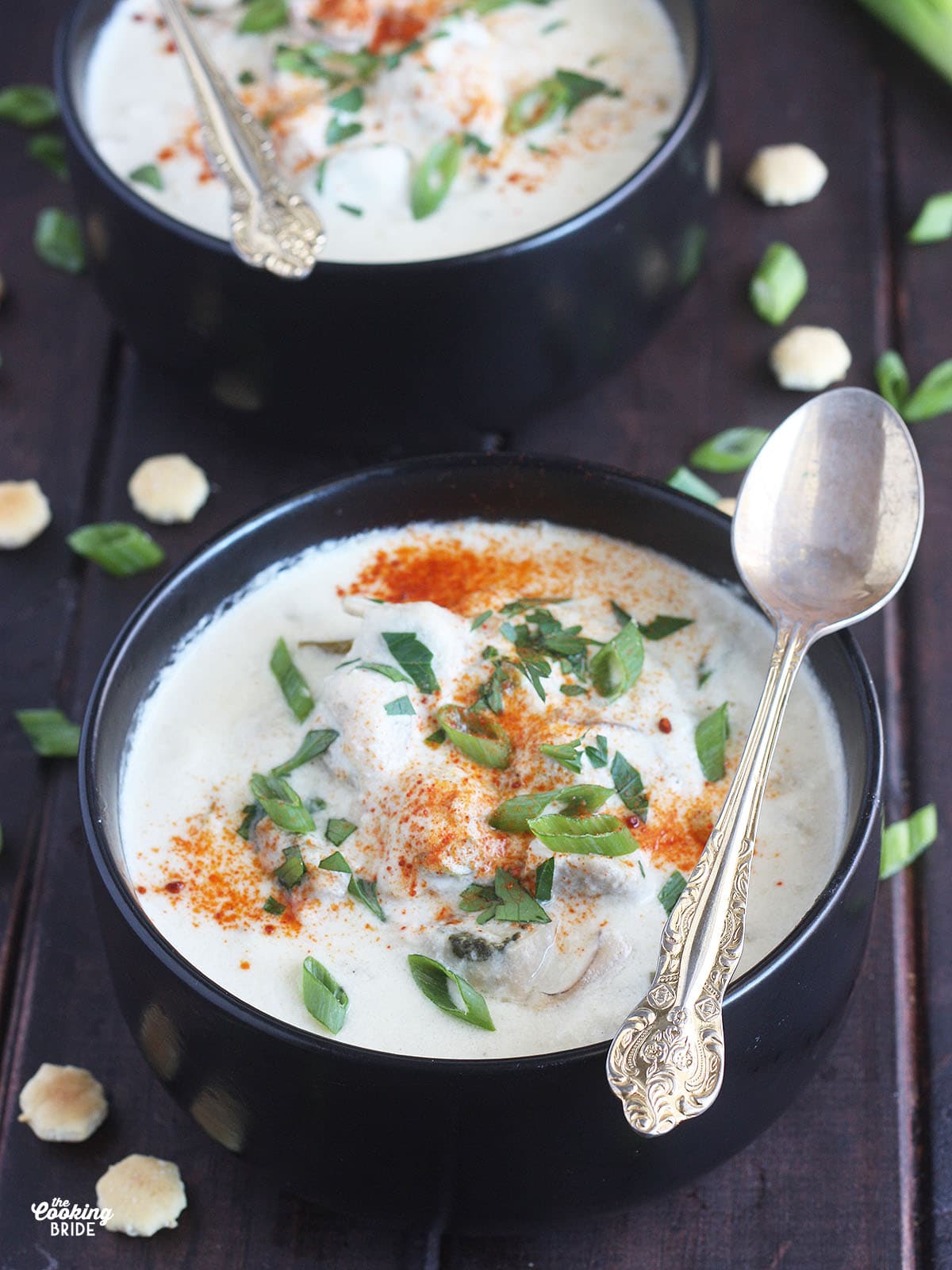

Oyster Stew
Ingredients
- 4 cups whole milk
- 1 cup heavy cream
- 1 cup 2 sticks unsalted butter
- 1 cup chopped celery
- 1 cup diced green onions plus more for garnish
- 2 tablespoons minced garlic
- 4 tablespoons flour
- 2 pints raw oysters with their juice
- Salt and pepper to taste
- 4 tablespoons minced parsley optional
- Cayenne pepper optional
Instructions
- In a medium saucepan, heat milk and heavy cream over low heat. Do not let the pot come to a boil.
- In the meantime, melt the butter in a large stockpot over medium heat.
- Add the celery. Sauté for five minutes.
- Add the green onions. Sauté for two mintues
- Add the minced garlic and sauté for 30 seconds.
- Gradually whisk in the flour. Cook for 2-3 minutes, stirring constantly, to remove the raw flour taste.
- Gradually add the warmed milk and cream, whisking constantly to prevent lumps. Bring to a simmer over medium heat, then reduce the heat to medium-low and continue to simmer for 10 minutes, stirring frequently.
- Add the oysters with their juice. Bring the soup back to a simmer over medium heat, then reduce the heat to medium-low again and cook for an additional 10 minutes until the oysters are cooked through.
- Season with salt and pepper to your preference.
- Ladle into bowls and garnish with minced parsley and a sprinkle of cayenne pepper if desired.


